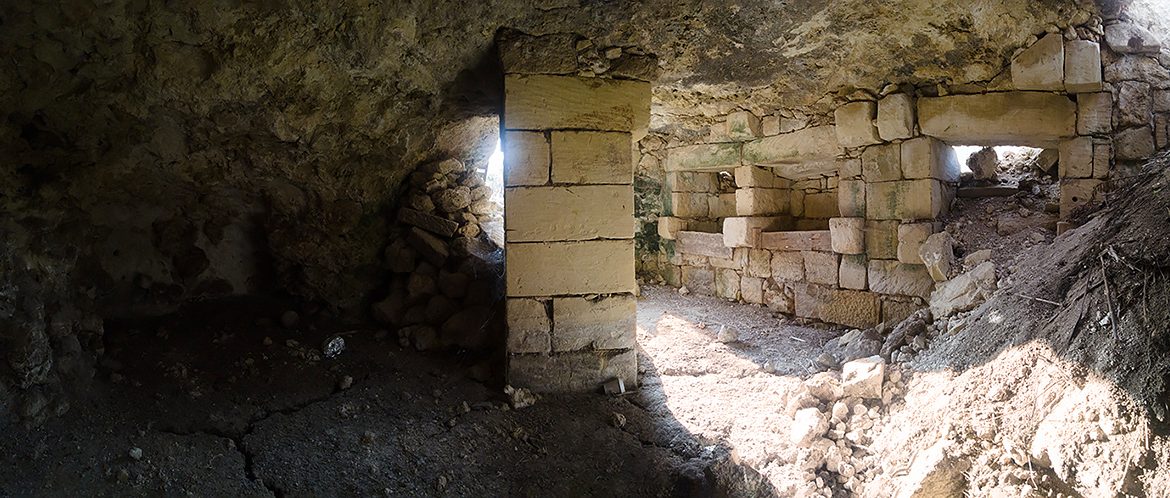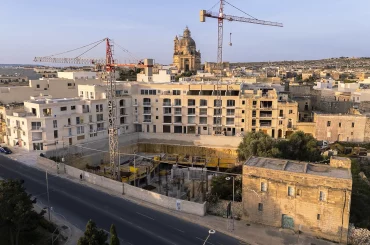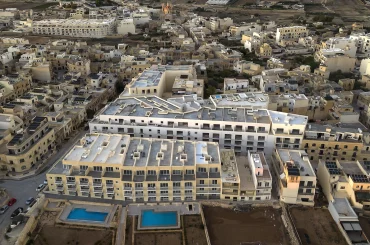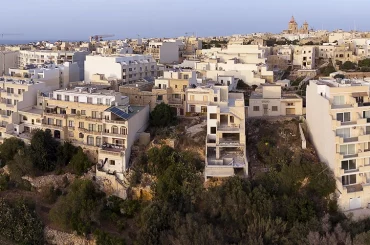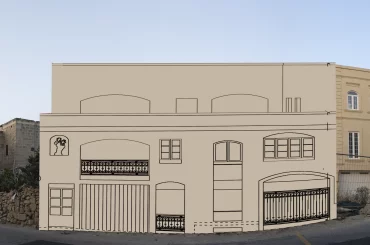A row of seven houses proposed for a site where prehistoric human bones were reportedly found went on sale off-plan twelve days before the applicant applied for a development permit, this website can report. The houses have been promoted for sale on Facebook for €235,000-€240,000 since the beginning of April. The development application remains in its early stages, currently open for public consultation.
The site is around 200 metres away from a megalithic site, and works on an earlier development granted permission in 2018 were halted last April after residents took pictures of what appeared to be broken human bones. The NGO Flimkien Ghal Ambjent Ahjar obtained the pictures, and issued a press statment.
It is understood that excavation of the site for the existing development permit for four houses (applicant now seeks to expand project to seven house) was at the time being monitored by an archaeologist under terms imposed by the Superintendence of Cultural Heritage, the national agency for the protection of cultural heritage.

The Superintendence itself did not reply to any of this website’s questions, including questions on any monitoring and whether any findings had been reported prior to the press statement Flimkien Ghal Ambjent Ahjar.

Works were eventually halted, and archeologists were later seen investigating the site – sheets now cover part of the site were the archeologists were working.

A source in archeological circles told this website that the bones found on site are thought to be human bones, but further tests are needed to ascertain the age and nature of the discovery.
The location, as already pointed out, is near a prehistoric megalithic site called Santa Verna in Xaghra. The site holds the vestiges of what was once a Neolithic temple. The area also holds numerous caves, some of which were adapted in recent decades for the rearing of sheep.

Pictures passed to this website by a source show a caved-in cave on the site where the excavation took place.
This website did not find any reference to the caves in the Planning Authority’s documents pertaining to the earlier development application for four houses, which was granted in 2018.
The Superintendence of Cultural Heritage in its consultation letter at the time only wrote that an “initial investigation of the site footprint” had found “minor rock-cut agricultural features and/or quarrying in this area.”
It added that “there is a risk that ground disturbance in this area may uncover cultural heritage features that may necessitate amendments to the proposed drawings. The applicant is being made aware of these risks.” The Superintendence made no mention of caves.

The Superintendence then specified that, if permission to build were to be granted, the excavation or preparatory works would have to be monitored by an archeologist. Such archeologists usually work on terms specified by the Superintendence.
Sources have told this website that archeologists engaged to monitor excavations of developments in sensitive zones would typically handle numerous sites at any one time, and usually do the rounds among sites without staying put in any one place for any substantial time throughout the working day.
As already pointed out, the applicant has now applied for a modified permit of seven houses instead of the four already granted. This will make the development denser and higher, rising to four storeys instead of three.
The application was put in on 12 April, which is 12 days after the seven houses began to be advertised for sale on Facebook posts.

Sources said that no works have been observed on site since archeologists moved in to investigate, and part of the site remains covered with sheeting.
The Superintendence did not reply to any of the questions sent by this website.
Donate to Planning Emergency
The investigative articles in the Planning Emergency series published on this website take time, resources, and effort to put together. These articles make an impact by the robustness of the research and the professionalism of the reportage. Your support is needed to sustain this kind of impactful reportage. Almost a dozen articles within the Planning Emergency series have been published on this website since the beginning of the year, but only €20 raised from donations at time of publishing this article. Give heart and sustenance by donating as little as €5.

